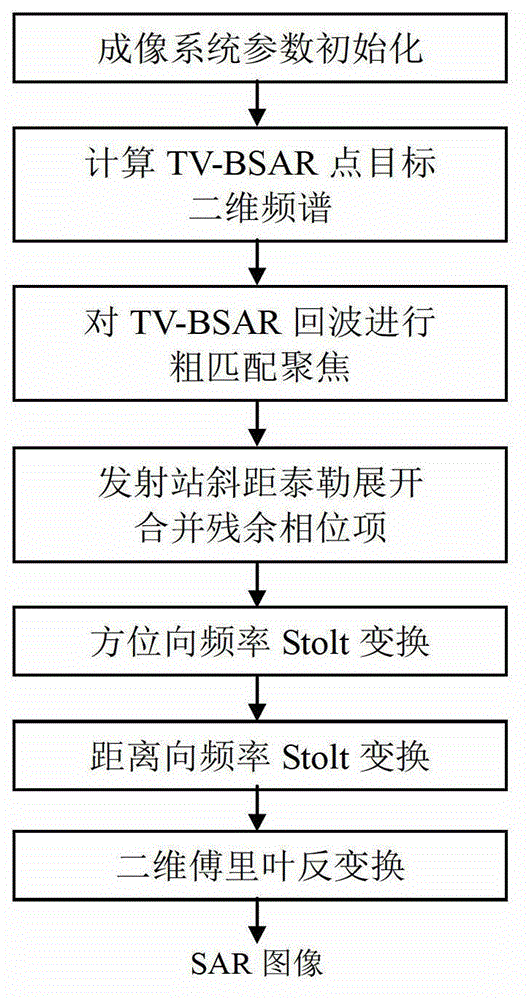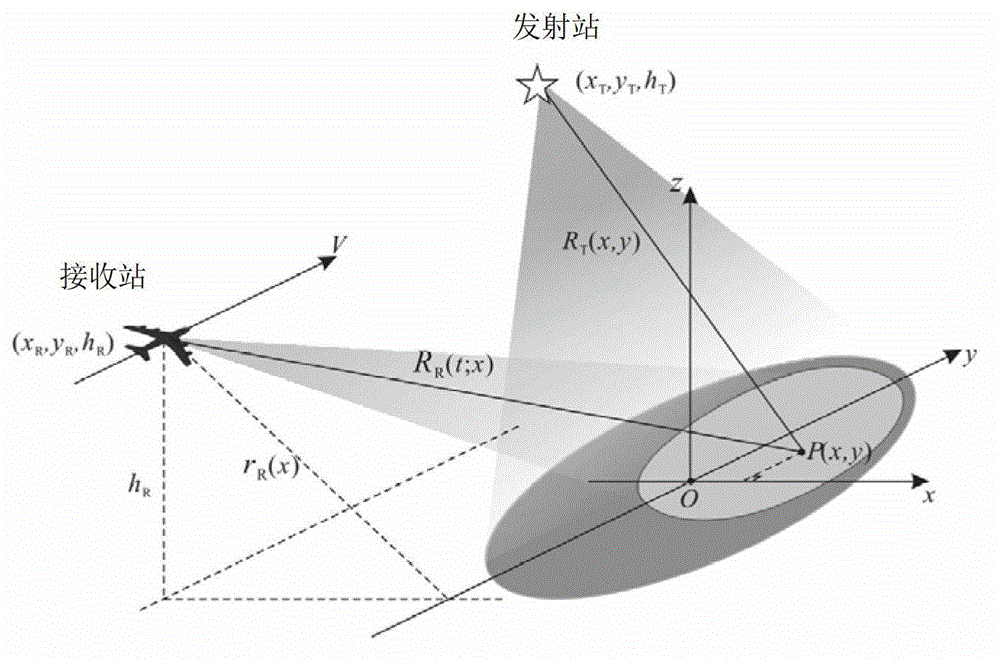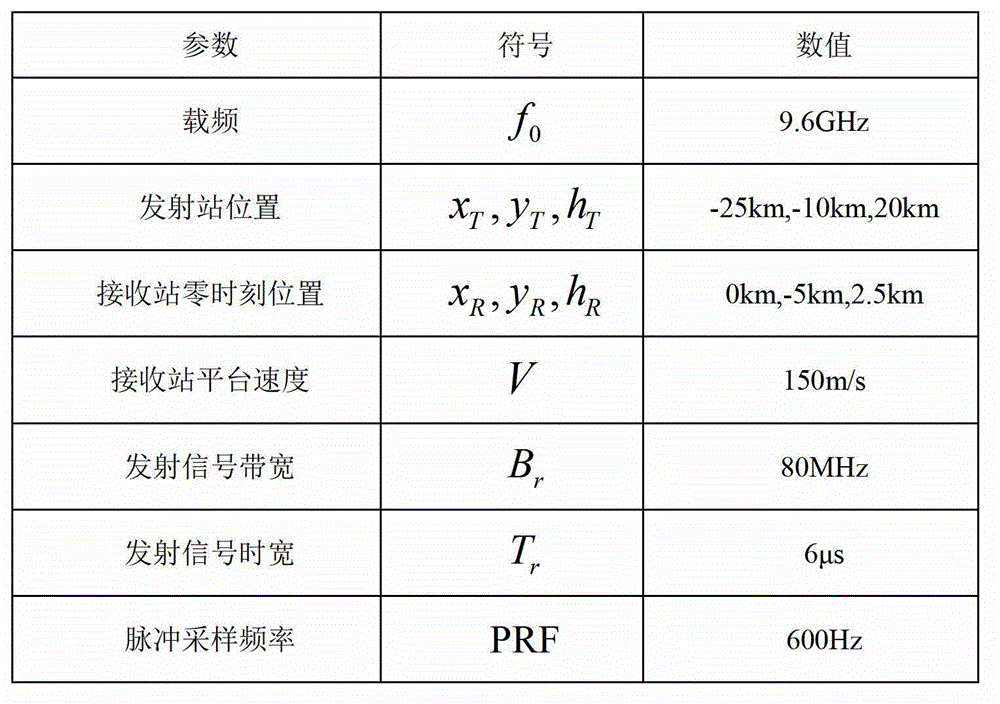Bistatic synthetic aperture radar (BSAR) frequency domain imaging method
A technology of synthetic aperture radar and imaging method, which is applied in the field of radar, and can solve problems such as the inability to achieve precise focusing of bistatic SAR in shift mode and the inability to solve the problem of two-dimensional space variation of bistatic SAR in shift mode
- Summary
- Abstract
- Description
- Claims
- Application Information
AI Technical Summary
Problems solved by technology
Method used
Image
Examples
Embodiment Construction
[0085] The present invention will be further elaborated below in conjunction with the accompanying drawings and specific embodiments.
[0086] The present invention mainly adopts the method of simulation experiment to verify, and all steps and conclusions are verified correctly on Matlab2010. The present invention will be further described in detail with regard to specific embodiments below.
[0087] The system structure adopted in this embodiment is as follows figure 2 As shown, the system coordinate system takes the imaging center target point O as the coordinate origin, the platform moves along the y-axis, the x-axis is the direction tangent to the track, and the z-axis is the direction vertical to the ground.
[0088] The schematic flow chart of the bistatic synthetic aperture radar frequency domain imaging method of the present invention is as follows figure 1 As shown, the specific process is as follows:
[0089] Step 1: For any point target in the imaging area, calc...
PUM
 Login to View More
Login to View More Abstract
Description
Claims
Application Information
 Login to View More
Login to View More - R&D
- Intellectual Property
- Life Sciences
- Materials
- Tech Scout
- Unparalleled Data Quality
- Higher Quality Content
- 60% Fewer Hallucinations
Browse by: Latest US Patents, China's latest patents, Technical Efficacy Thesaurus, Application Domain, Technology Topic, Popular Technical Reports.
© 2025 PatSnap. All rights reserved.Legal|Privacy policy|Modern Slavery Act Transparency Statement|Sitemap|About US| Contact US: help@patsnap.com



